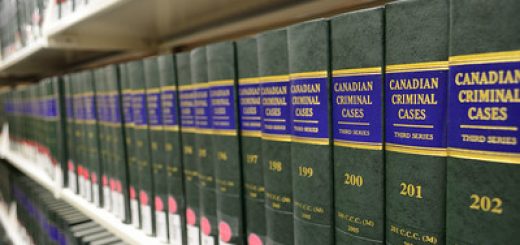R v Clark: The Supreme Court upholds specialized jury instructions for eyewitness identification

Is eyewitness testimony subject to a special standard of jury instructions? In R v Clark, 2022 SCC 49, the Supreme Court of Canada (“SCC”) upheld the need for trial judges to provide Hibbert instructions upon eyewitness testimony that leads to an identification in court. In a unanimous oral judgement delivered by Justice Karakatsanis, the court upheld the dissent of Justice Leurer at the Saskatchewan Court of Appeal (“SKCA”), and set aside the conviction of the accused, ordering a new trial.
Facts of the Case
The accused, Ryan Clark, had been charged with the murder of his close friend, Christopher Durocher. At trial, the primary issue was the identity of the person responsible for Mr. Durocher’s death (R v Clark, 2022 SKCA 36 [Clark], para 1). The determination of this issue was hinged on the testimony of two witnesses, Mr. Williams and Ms. Holmgren.
On appeal, Mr. Clark alleged that the trial judge had erred in, among other things, failing to provide a Hibbert instruction to the jury prior to the testimony of the abovementioned witnesses. (Clark, para 1) A Hibbert instruction usually warns the jury about the shortcomings of eyewitness identification, especially when the testimony of the witness is delivered in court and involves identifying the accused as the perpetrator in front of the jury:
“… it is important to remember the danger associated with eyewitness in-court identification is that it is deceptively credible, largely because it is honest and sincere. The dramatic impact of the identification taking place in court, before the jury, can aggravate the distorted value that the jury may place on it.” (R v Hibbert, 2002 SCC 39 [Hibbert]).
Mr. Clark’s argument was largely based on the fact that the two eyewitnesses in this case, Mr. Williams and Ms. Holmgren, had only met the person that they identified as the perpetrator on the day that the crime was committed (Clark, para 1). Mr. Williams and Ms. Holmgren had spent the day with Ms. Durocher and the perpetrator, following which Ms. Holmgren left the scene of the crime. Shortly afterwards, Mr. Williams saw the perpetrator strike Mr. Durocher, at which point he drove a short distance away, to where Ms. Holmgren was, in order to inform her (Clark, paras 5-10).
When interviewed by the police the next day, neither Mr. Williams nor Ms. Holmgren were able to identify the perpetrator by name. Further, only Mr. Williams had seen the crime occur; Ms. Holmgren had not been present at the time. Mr. Williams was also high on amphetamines throughout the day. He had subsequently told Ms. Holmgren, who did not know the perpetrator’s name, that the man was called ‘Ryan’; she thereafter went through Mr. Durocher’s Facebook profile, and concluded that the person she had met earlier was the accused. Even at this stage, she could only tell the police that she was about “90% per cent sure” that the person she had met was in fact the accused, Ryan Clark. (Clark, paras 62-63).
However, at trial, both Mr. Williams and Ms. Holmgren unequivocally identified the accused as the person whom they had met on the day of the crime, and who Mr. Williams had seen strike the victim. (Clark, paras 62-63).
The Appellate Decision
On appeal, the primary question was whether or not the trial judge had erred in failing to provide the jury with an “adequate caution” when it came to the eyewitness evidence that formed the primary basis of the certainty of identity that led to Mr. Clark’s conviction (R v Clark, para 1). Justice Tholl, writing for the majority, found that this burden had been adequately met.
Mr. Clark argued that, in addition to identifying the frailties of eyewitness evidence, the trial judge had an obligation to specifically caution the jury about the dangers of in-court identification (Clark, para 23). While acknowledging the issues associated with eyewitness evidence and in-court identification, Justice Tholl noted that “an accused is entitled to a fair, adequate and proper charge to the jury, but those instructions are not subject to review on a standard of perfection” (Clark, para 17). Applying this standard, he observed that the charge provided by the trial judge in this case had informed the jury of “the dangers of all of the eyewitness identification testimony, and prepare[d] the jurors to carefully assess and weigh that evidence from a credibility and reliability standpoint” (Clark, para 33). Keeping this in mind, the majority dismissed the appeal and upheld the conviction.
The Dissent
However, it is Justice Leurer’s dissent that has ultimately been upheld on appeal to the SCC. Noting that a caution about in-court identification was not required in every case, he ultimately nevertheless held that the factual matrix in this case demanded a specific caution that related in particular to the in-court identification evidence. As a result, he allowed the appeal and set aside Mr. Clark’s conviction, further ordering a new trial (Clark, para 58).
Justice Leurer identified a few key reasons as to why he believed that a general caution was insufficient in this case. He pointed out that one of the key eyewitnesses, Mr. Williams, was incapacitated by drugs throughout his interaction with the perpetrator of the crime. Further, Ms. Holmgren did not witness the assault herself, and in fact gave an incomplete description of the accused to the police the next day – only focusing on Mr. Clark after being told that his name was ‘Ryan’, and searching for him on social media (Clark, para 63). Even then, she remained somewhat uncertain, being only “90% sure” (Clark, para 63).
Justice Leurer noted that apart from the eyewitness identification, the rest of the Crown’s evidence was largely circumstantial in nature. The Crown had stated that Mr. Clark’s motive for the assault was Mr. Durocher’s supposed relationship with Mr. Clark’s partner; that Mr. Clark had been seen that day driving a similar vehicle, and lastly, that his DNA had been found on a water bottle on the scene. However, witnesses could not positively identify as to whether the vehicles were the same; and further, Mr. Clark had resided on the property before, and it was unclear how long the water bottle might have been present on the scene (Clark, paras 64-69).
Justice Leurer then noted that, given the other evidence in the case, the in-court identification by the eyewitnesses had played a substantial role in Mr. Clark’s conviction. He then noted that such identification tended to be often flimsy and misleading, precisely because of the “honest and sincere” nature of the delivery (Clark, para 73). Noting that the law had become aware of the problematic nature of this evidence, Justice Leurer then referred to the standard set in Hibbert, which stated that a special instruction, going beyond ‘standard cautions’, was required when there was in-court identification testimony (Clark, para 73).
However, Justice Leurer specifically pointed out that not all cases that involved in-court identification evidence would require the imposition of such a condition. Rather, whether or not such a caution was required would depend on the individual circumstances of the case (Clark, para 100). Noting the exceptional circumstances of this case – where so much of the Crown’s case was built on circumstantial evidence – Justice Leurer held that the trial judge’s charge was insufficient, and set aside the conviction of Mr. Clark, ordering another trial.
Analysis
In its oral judgement, the SCC specifically noted that a Hibbert instruction of the kind envisaged by Justice Leurer was required in this case. The appellate judges all agreed that although recommended, such instructions were not universally required upon in-court testimony. However, both Justice Leurer (in dissent) and the SCC (unanimously) agreed that the facts and circumstances of this case warranted such an instruction.
As Justice Leurer noted, eyewitness identification in court can often be especially misleading because the witness in question can state their testimony with a great deal of confidence. Given that this is immediately perceptible to the jurors, this may artificially bolster the Crown’s case, even where the facts and circumstances of the case would otherwise indicate otherwise. In the present case, there were serious reasons to doubt Mr. Williams’ and Ms. Holmgren’s testimony. Mr Williams was on amphetamines, and had been hallucinating earlier that day. Ms. Holmgren did not witness the assault in question personally. Neither party was able to positively identify Mr. Clark to the police initially, but stated in court with absolute certainty that they believed that the person they had witnessed in the victim’s company was Mr. Clark. This dissonance in their evidence may be less apparent when the parties are themselves giving evidence in court. This is the uncertainty that a Hibbert instruction seeks to remove, by providing the jurors with an extra caution regarding the value of the identification evidence that they hear in court.
In many ways, a Hibbert instruction is simply an extension of the general latitude offered to the accused in criminal trials. Given the special danger to the accused, who is at threat of losing his liberty, the law strives to ensure that the presumption of innocence is upheld by allowing the accused a wider ambit of latitude, and seeking to curb or strike down evidence that it believes is insufficient. At times, this may come into conflict with the general principle of evidence law that states that it is better for evidence to be heard; at such times, the courts have devised a mechanism whereby the evidence can be heard, but where the jury is also warned about the shortcomings of the evidence that they have just been exposed to. This is done through the mechanism of jury instructions; and sometimes, through the provision of specialized instructions, such as those envisaged by Hibbert.
At its core, a Hibbert instruction is an integral portion of the presumption of innocence that is ingrained into our criminal law system. Justice Leurer’s stout defence of it, thus, comes as no surprise. Indeed, it is clear that even the majority at the SKCA believed that a Hibbert instruction held value; they merely believed that the trial judge’s existing instructions to the jury were in effect sufficient. Justice Leurer disagreed, given the exceptional circumstances of this case – where so much of the conviction hinged on the in-court identification – and, assessing the case, the SCC agreed with him. In many ways, this case involves the SCC once again placing primacy on the rights of the accused in a criminal trial.







Join the conversation